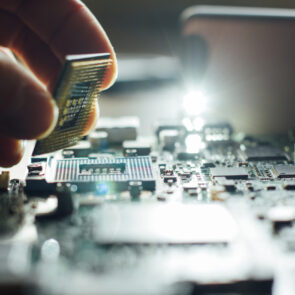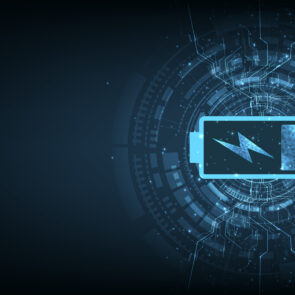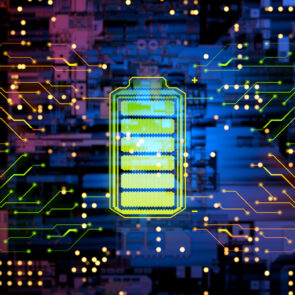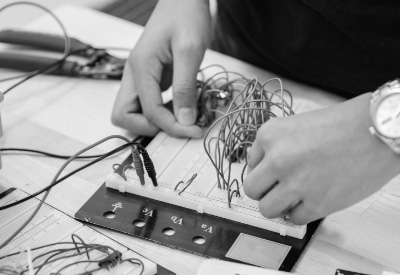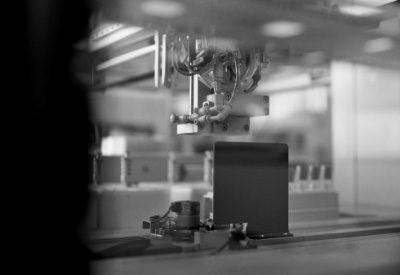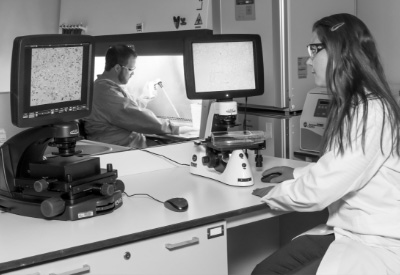May 2025 | Tips & Information
Challenges in Powering Devices in Remote or Harsh Environments
From deep beneath the ocean to far beyond Earth’s orbit, modern technology is venturing into places humans rarely go—and staying there for a long time. Whether it’s a sensor monitoring climate change in Antarctica, a satellite system orbiting the Earth, or a communications relay in a secure defense application, the one constant challenge across all these domains is power.
Keeping electronics running in remote or harsh environments is about far more than building rugged hardware—it’s about ensuring a reliable, continuous, long-lasting power source that doesn’t require human intervention. In many cases, the success of a mission hinges entirely on a battery that must function flawlessly for years, or even decades, without fail.
This is where City Labs’ NanoTritium™ batteries stand apart. Designed to meet the demands of the most extreme operating conditions, these unique power sources deliver decades of maintenance-free energy, even in the harshest environments on Earth and beyond.
The Power Problem in Extreme Environments
When we think about technology in extreme settings, we often imagine high-performance sensors, advanced communication systems, or cutting-edge robotics. But none of that matters if the power supply fails.
Harsh or remote environments introduce unique stressors that make traditional power solutions unreliable or even unusable. Some of the most challenging conditions include:
- Space. With extreme temperatures, vacuum conditions, and high radiation levels, space is a brutal environment for electronics. Solar power may work in orbit but is unreliable for long-duration deep space or shadowed lunar missions.
- Polar regions. Electronics in Arctic or Antarctic regions must endure sub-zero temperatures for months on end, during which time chemical batteries lose performance or freeze.
- Deep-sea deployments. Subsea sensors face crushing pressures, corrosive saltwater, and zero access to sunlight, making energy harvesting impossible.
- High-radiation zones. Nuclear power plants, radiation testing facilities, and space environments expose electronics to doses of radiation that can degrade or destroy conventional batteries.
- Security and defense systems. Many secure applications require always-on, tamper-resistant power, often in portable or remote-deployable formats.
In all these scenarios, power is often the weakest link—the one component most likely to degrade, fail, or require replacement. And in these environments, replacement isn’t an option.
Where Traditional Batteries Fall Short
Conventional batteries including lithium-ion, alkaline, or silver oxide chemistries—rely on electrochemical reactions that degrade over time. They are prone to:
- Self-discharge, reducing capacity even when unused
- Sensitivity to temperature, which can reduce voltage output or freeze electrolyte fluids
- Short lifespans, requiring frequent replacements or recharging
- Vulnerability to radiation, leading to chemical degradation or internal shorting
While these batteries work well for everyday electronics, they simply aren’t built for decades-long deployments in extreme conditions.
NanoTritium™ Batteries: A Power Source Designed for the Extreme
City Labs’ NanoTritium™ batteries were created specifically to solve this problem. Based on betavoltaic technology, these solid-state power sources convert the natural radioactive decay of tritium, a relatively benign and stable hydrogen isotope, into a steady stream of ultra-low electrical power.
Unlike chemical batteries, NanoTritium™ batteries are “always on,” generating a consistent trickle of electricity for over 20 years with no recharging, no moving parts, and no maintenance. This makes them ideally suited for powering mission-critical electronics in environments where failure is not an option.
Learn more about the core science behind these batteries in our Technology Overview, or explore how nuclear battery technology works.
Built-In Advantages for Harsh Conditions
NanoTritium™ batteries offer several unique advantages that directly address the demands of extreme settings:
- Temperature resilience. They operate across a wide temperature range, including subzero conditions, without performance loss.
- Radiation resistance. The solid-state design and nuclear-based energy generation allow them to function even in high-radiation environments, like space or nuclear facilities.
- Shock and vibration tolerance. These batteries do not have moving parts or liquid components, making them ideal for use in vehicles, rockets, or portable military systems.
- Compact and sealed. Designed for integration into microelectronics, they can be embedded into tiny platforms without sacrificing lifespan or reliability.
- Maintenance-free longevity. No recharging cycles or energy harvesting required—just steady, predictable power for the life of the device.
Discover how these features support advanced mission profiles across multiple industries on our Applications page.
Real-World Applications and Use Cases
NanoTritium™ batteries are already proving their value across a range of cutting-edge projects:
- Space exploration. Powering sensors that must operate far from Earth with no access to sunlight or service.
- Environmental monitoring. Supporting long-term sensor networks in the Arctic and oceans, where manual maintenance is costly or impossible.
- Medical implants. Offering the promise of decades-long energy sources for pacemakers and other implantable devices, reducing the need for risky replacement surgeries.
- Secure communications. Providing uninterrupted power for critical defense and security electronics that must remain active under any condition.
Explore our available models and technical specifications on the Products page.
A New Standard for Power Reliability
As our technology expands into increasingly remote and inhospitable places, the need for power systems that can keep up has never been more urgent. In many cases, the success of a device—or even the mission itself—hinges on a battery that works without compromise.
NanoTritium™ batteries represent a new standard in ultra-reliable, long-life power. By rethinking what a battery can be—from electrochemical storage to nuclear-powered generation—City Labs is empowering innovation in places where traditional power simply cannot go.
Learn more about our unique energy solution and what makes tritium an ideal material for long-term applications, or dive deeper into our approach to long-lasting power.


